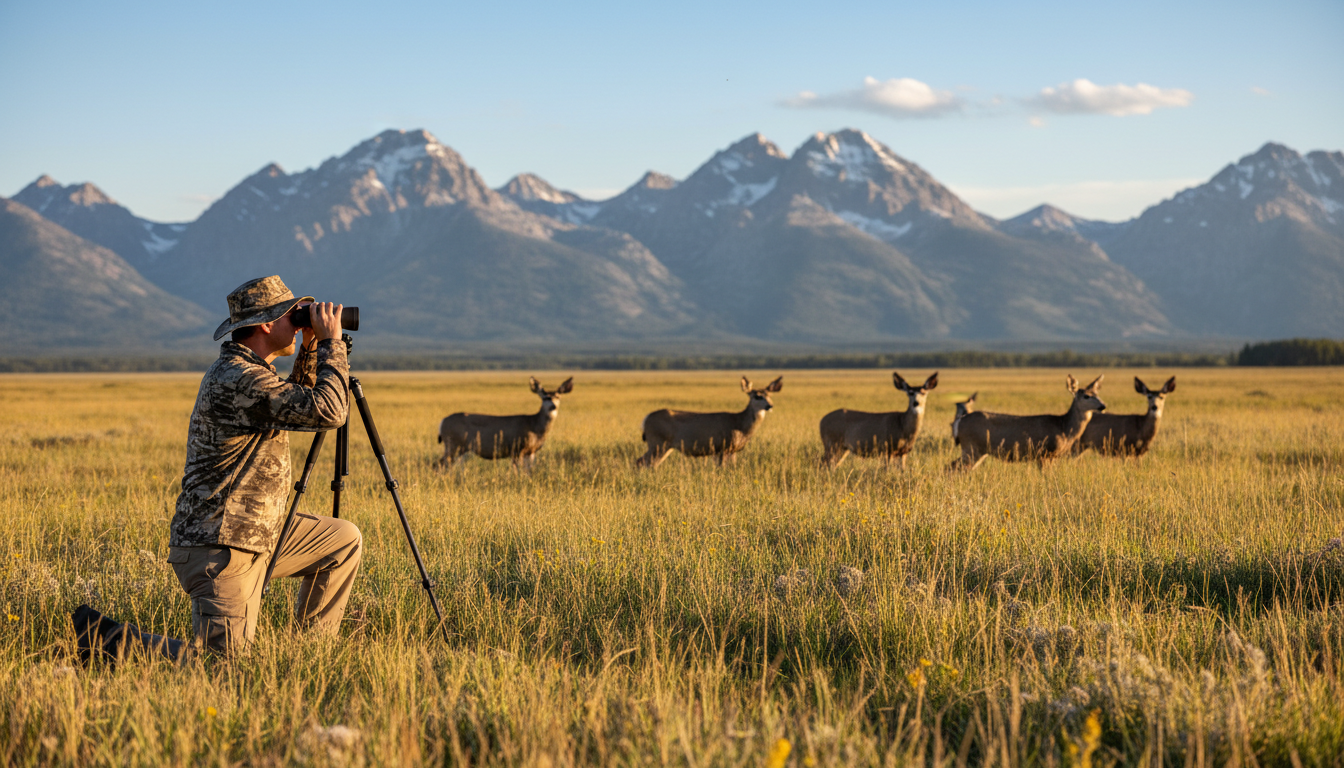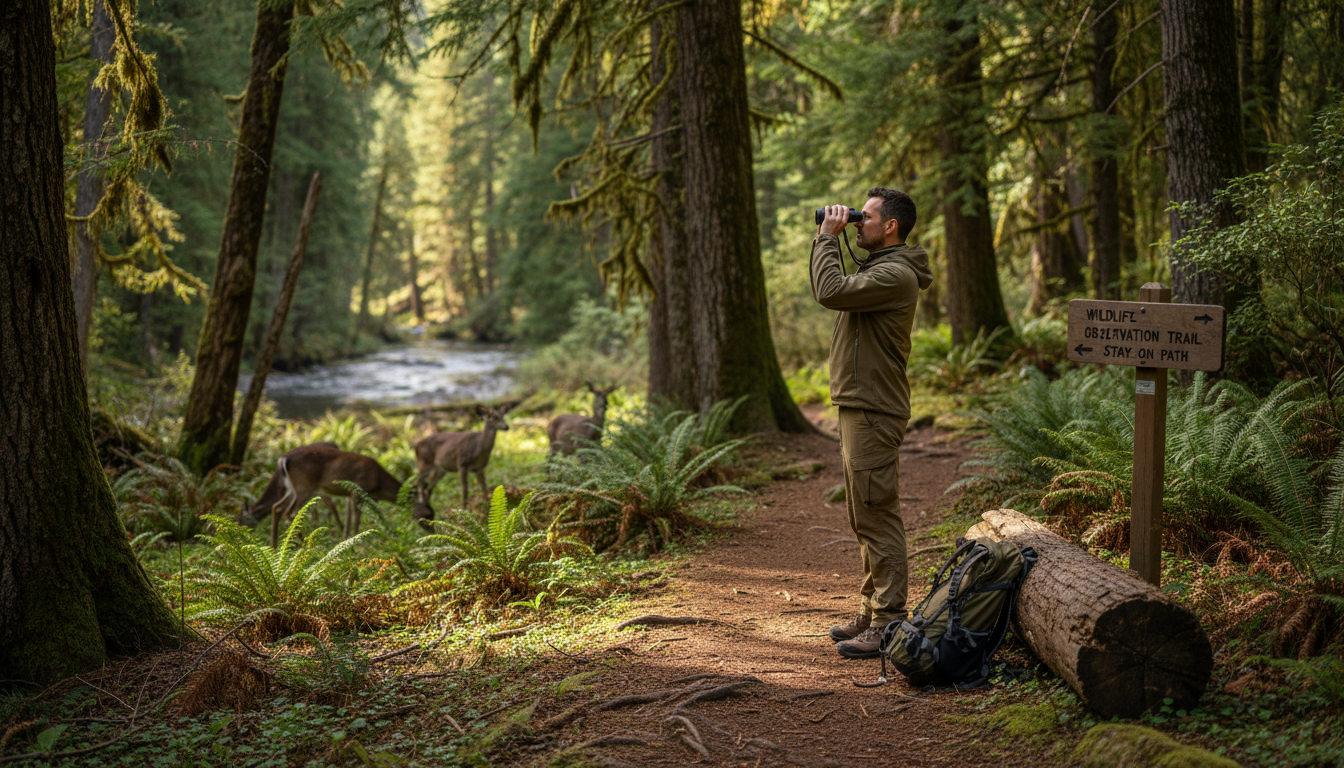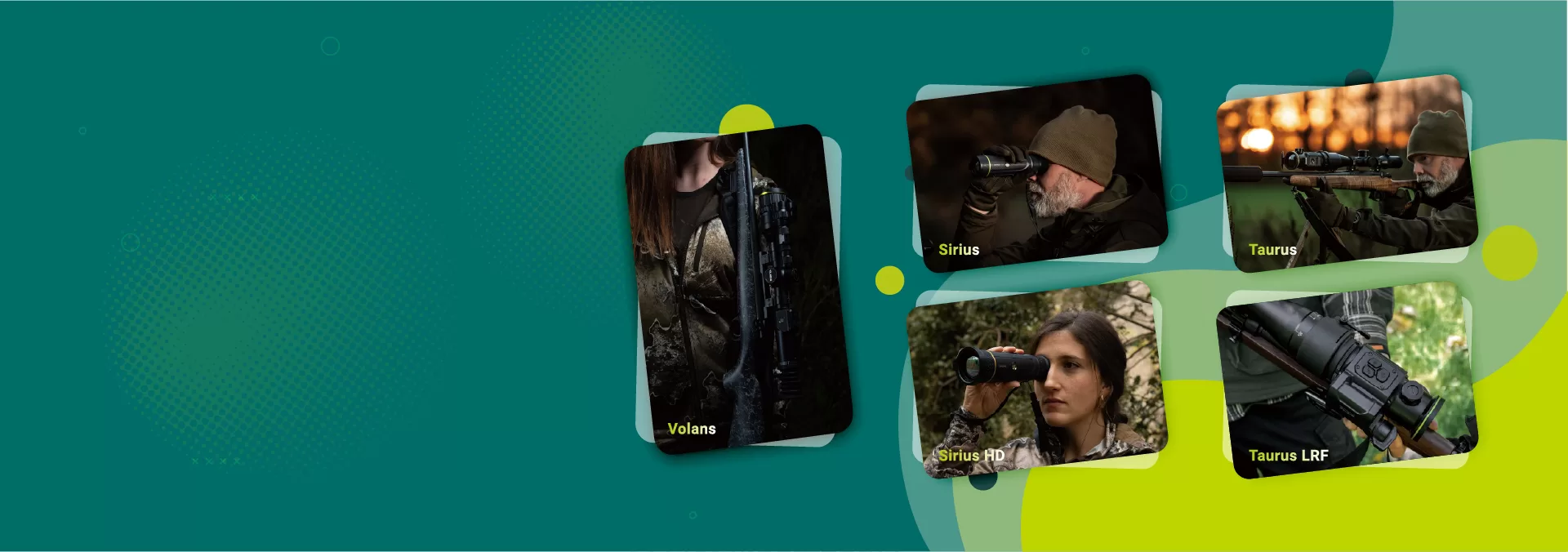We all love the thrill of spotting wildlife in their natural surroundings. Whether you’re hoping to catch a glimpse of a deer grazing in a meadow or watching birds build their nests, wildlife observation connects us to nature in ways few other activities can. But here’s the thing—getting too close or making the wrong moves can stress animals out, mess with their natural behavior, and even put you in danger.
That’s why we put together this guide to help you watch wildlife the right way. We’ll walk you through proven best practices that keep both you and the animals safe, so you can enjoy these amazing moments without causing any harm. If you’re interested in observing wildlife at night, check out our guide on fox hunting at night behavior and techniques for more specialized tips.
Give Animals Room: Keep Your Distance

Many parks require you to stay a minimum distance of 25 yards from most wildlife and 100 yards from predators like bears and wolves. That’s roughly two bus lengths for smaller animals and a whole football field for the big predators. If you can take a selfie with an animal without zooming in, you’re way too close.
Use binoculars, spotting scopes, or cameras with zoom lenses to get a better view without crowding the animals. Binoculars and telephoto lenses are essential tools for creating physical distance and allow you to observe wildlife discreetly, while offering a much more rewarding glimpse into the animals’ natural behavior. When animals don’t know you’re watching, they act naturally—and that’s when you see the really cool stuff.
Respect Wildlife: Leave Animals Alone

Simply put, leave animals alone—no touching, no feeding, no harassing. It sounds obvious, but you’d be surprised how many people forget this basic rule. It’s illegal to feed, touch, tease, frighten, or intentionally disturb wildlife.
Feeding wildlife might seem harmless or even kind, but it creates serious problems. Feeding wildlife in parks can make them come looking for more, and once they have learned that people are a source of food, wildlife can become aggressive toward people. Animals that get used to human food lose their natural foraging skills and can end up dependent on handouts. Worse, they might approach roads or populated areas looking for snacks, which often ends badly.
Silence is paramount, whether you’re in motion or simply observing, and shouting to catch the attention of an animal, imitating birdsong to attract a bird, or mimicking an animal call is not okay. Using animal calls or bird call apps counts as harassment and is actually illegal in many places. It can cause birds to abandon nests, leaving their babies vulnerable to predators, or make animals waste precious energy responding to fake calls.
Stay on Trails to Help Keep Human Presence Predictable

Stay on trails to help keep human presence in predictable areas, and if dogs are allowed, keep them on-leash. Wandering off-trail might feel adventurous, but it can damage delicate habitats and disturb nesting sites or burrows you might not even see.
Sticking to designated paths helps protect vegetation that provides food and shelter for countless species. By staying on marked trails, you’re also less likely to disturb the homes of the animals you’re trying to observe, and these paths help keep visitors safe and prevent them from accidentally trampling on delicate plants.
If you’re hiking in an area where pets are allowed, keep them leashed at all times. Wild animals see dogs as predators, which can cause unnecessary stress or trigger defensive behavior. Plus, pets can spread diseases to wildlife or pick up parasites themselves.
Store Your Food and Stash Your Trash
Access to trash, and even crumbs left on picnic tables can attract animals, and feeding wildlife in parks can make them come looking for more. To an animal, anything that smells like food is food. That means properly storing your snacks and packing out every bit of trash you bring.
Feeding wildlife puts you at risk of injury and the wildlife at risk of being removed and humanely killed by wildlife managers—don’t be responsible for the death of wildlife! Use bear-proof containers where required and make sure trash bins are fully closed. A clean campsite or picnic area isn’t just good manners; it’s a matter of life and death for some animals.
The “leave no trace” principle applies to all outdoor recreation. Everything you carry in should come back out with you—wrappers, bottles, food scraps, all of it. Littering spoils natural beauty and poses real threats to wildlife that might eat or get tangled in your garbage.
Keep Your Eyes on the Road
Vehicle strikes are one of the most deadly types of encounters for wildlife in parks, as roads cut through their habitats or migration routes. When you’re driving through wildlife areas, slow down and stay alert. Animals can dart into the road without warning, especially at dawn and dusk when many species are most active.
When you want to stop to watch wildlife, pull your vehicle completely off of the road into a designated pull-out—this keeps wildlife safe as well as other motorists. Don’t just slam on the brakes in the middle of the road. Find a proper pull-off, park safely, and then enjoy your observation from there.
Following posted speed limits gives you more time to react if an animal appears. It also reduces the severity of any collision that might occur. Remember, you’re driving through their home—they have the right of way.
See Something, Say Something
Tell a ranger if you come into physical contact with wildlife, and also tell a ranger if you see wildlife that are sick, dead, or acting strangely, including wildlife that approach you. Reporting these incidents helps park managers track disease outbreaks, monitor animal behavior, and keep other visitors safe.
The best thing you can do to help in these situations is to keep your distance and leave it to the experts, as sick or dead wildlife can potentially transmit diseases to you or your pets. Don’t try to rescue or touch sick animals yourself. Wildlife professionals have the training and equipment to handle these situations properly.
If you see other visitors breaking wildlife observation rules—getting too close, feeding animals, or harassing wildlife—speak up politely or report it to park staff. We all have a role in protecting these animals and their habitats.
Use the Right Gear for Wildlife Watching
Having proper equipment makes your wildlife observation experience better and safer. Binoculars are perfect for watching birds and smaller animals without disturbing them. Look for models with good magnification and a wide field of view so you can spot animals quickly and track their movements easily.
For larger animals at greater distances, a spotting scope works wonders. It’s basically a small telescope that lets you see fine details and colors from far away. A quality spotting scope can turn a distant speck into a clear view of an elk or moose going about its day.
Avoid using flash photography, as it can startle animals and disrupt their natural behavior. Flash can startle animals, causing them stress and potentially disrupting their natural behaviors—instead, practice patience and wait for the perfect lighting to naturally capture your subject. Natural light photography takes more patience, but the results are worth it, and you’re not stressing out the wildlife.
Don’t bring spotlights, laser pointers, or devices that make animal sounds. These can disorient animals, cause them to abandon nests, or trigger defensive responses. If you want to document your sightings, consider using apps like iNaturalist that let you contribute to citizen science projects.
Know the Warning Signs You’re Too Close
When viewing wildlife, your actions should never cause a change in animal behavior, as fidgeting and fleeing are universal signs of disturbance in wildlife. Learning to read animal body language helps you recognize when you need to back off.
For your best chance to observe some amazing natural behaviors, avoid making animals feel stressed or threatened by moving back to the recommended distance, and if an animal starts to stare, fidget or flee, calmly back away and give them more space. If a deer stops eating and stares at you, or if a bird keeps glancing your way instead of tending its nest, you’re too close.
Some animals freeze when threatened rather than running away. Just because an animal isn’t moving doesn’t mean it’s comfortable with your presence. Pay attention to ear position, body tension, and vocalizations. If an animal seems alert to your presence, increase your distance slowly and calmly.
Different species show stress in different ways. Birds might flush from nests, marine mammals might dive repeatedly, and large mammals like bears or moose might lower their heads or paw the ground. Do your homework before heading out so you know what warning signs to watch for with the species you hope to see.
Plan Ahead and Prepare
Before heading out for wildlife observation, research the area you’ll be visiting. Learn about local regulations, required permits, and seasonal closures. Some areas restrict access during nesting season or other sensitive times to protect wildlife.
There has been an increase in the popularity of wildlife observation and nature photography, and while there is no universal manual for respecting nature, here are five principles worth keeping in mind. Understanding the species you hope to see—their habits, habitats, and behaviors—makes for a better experience and helps you know what to expect.
Check the weather forecast and dress appropriately. Bring plenty of water, snacks, sun protection, and a basic first aid kit. If you’re heading into bear country, carry bear spray and know how to use it. Being prepared means you can focus on enjoying wildlife rather than dealing with emergencies.
Consider joining guided tours led by experienced naturalists or park rangers. They offer valuable insights into animal behavior and habitat conservation while ensuring you follow best practices. For more tips on respectful outdoor adventures, visit our outdoor resources page.
FAQs
What’s the safest distance for watching bears and wolves in the wild?
Stay at least 100 yards (the length of a football field) away from bears, wolves, and other large predators. If the animal changes its behavior because of you, you’re too close—back away slowly and calmly.
Can I feed wild animals if I’m just giving them healthy food?
No, never feed wildlife. Even “healthy” human food disrupts their natural diet and foraging behavior, causes them to become dependent on people, and can make them aggressive. Feeding wildlife is illegal in most parks and protected areas.
How can I tell if I’m disturbing an animal while watching it?
Watch for behavior changes like staring at you, stopping normal activities (eating, grooming), fidgeting, vocalizing, or moving away. If the animal seems aware of your presence and alters what it’s doing, you’re too close and need to back off.
Is it okay to use my phone’s bird call app to attract birds for photos?
Absolutely not. Using bird calls or animal sounds—whether from apps or your own voice—is considered harassment and is illegal in many areas. It can cause birds to abandon nests, waste energy responding to fake calls, and expose them to predators.
What should I do if a wild animal approaches me?
Stay calm and don’t run. Back away slowly while facing the animal (but avoid direct eye contact with predators). Make yourself look larger if it’s a predator, speak calmly, and give the animal space to leave. Report the encounter to park rangers afterward.




